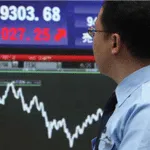
Rebuilding trust in Asia
RBS Head of Trade in Asia tells us that trust is the key to rebuild trade.
As the credit crisis impacted Asia’s supply chains, trust was badly damaged. Global banks, with their cross-border expertise and trade finance tools, are playing an important part in the rebuilding process. Estimates suggest that between 20,000 and 30,000 SMEs went out of business in southern China during the peak of the global slowdown. That pattern, if not the magnitude, was repeated right across Asia. Not surprisingly, trust evaporated as buyers and suppliers questioned each other’s ability to deliver their side of the bargain.
Back to basics
Although the economic outlook has improved since, trust, once broken, takes time to recover. Global banks, with a range of trade finance tools to fit every stage of the risk cycle, are strongly positioned not only to support trade through this process but to track the changing levels of confidence between buyer and supplier. The credit crisis saw a flight to safety, and in trade finance this was evident in the increasing popularity of letters of credit (L/Cs). While these are among the most secure instruments available to international traders, they are document intensive. This is less of a problem for a single trade, but more of an issue when they are being used for bigger supply chains.
Companies are therefore increasingly turning to banks to handle document preparation and manage the supply chain efficiently through online systems that enable both buyer and supplier to track and monitor each phase of the process. From here, we are seeing traders gradually moving onto documentary collections. Less expensive and complex than L/Cs, they leave the exporter facing slightly more risk, and reflect a growing level of trust between buyer and supplier.
Working capital solutions
It’s important to remember, however, that over 70% of global trade is still on open account terms.
Here trade finance can play a key role in keeping the wheels of trade turning in conditions that might otherwise cause it to grind to a halt. For example, whereas previously a supplier might have mortgaged assets to raise working capital, they may now find this route blocked because of lower asset values, raised interest charges and more cautious lending practices. By guaranteeing that the buyer will pay, banks can strengthen the entire supply chain. Suppliers use the bank’s guarantee to convert invoices into cash at better discount rates. Buyers, by negotiating better deals from their suppliers off the back of cheaper credit, can improve their bottom line.
A major UK clothing brand, which sources many of its distinctive fabrics in the Far East, had invested a lot of time and money building up a supply network based on offshoring and low cost sourcing.
Many of these suppliers were struggling as local finance dried up and demand dropped. Not wishing to risk losing their suppliers – nor wanting to pay a premium to keep them afloat – the retailer enlisted RBS’s help. By leveraging their strength as a buyer we were able to help improve their key suppliers’ credit terms and cash flow.
Not surprisingly, trade and supply chain finance is no longer being seen as a ‘nice to have’ for early adopters, but a key tool in both surviving current conditions and building a stronger future. However, complex supply chains not only need innovative finance solutions, they also need efficient delivery and administration.
Over the past few years, banks have used cutting edge technology to greatly improve both the transparency and responsiveness of supply chain management products.
The road ahead
Although globalisation may have suffered a setback over the past eighteen months, there is no sign that the long-term trend will abate. Buyers and suppliers need to look for trade finance solutions from banks which combine local knowledge with global reach. This does not mean, however, that large banks are operating in isolation. Far from it: banks such as RBS work with a range of partners – from trade insurers to local banks and government agencies – to share risk and leverage credit. By doing so we are able to find solutions and build opportunity for our clients.
Perhaps there is a theme emerging here. Just as buyers, suppliers and banks are working together to rebuild trade, so as financial institutions and governments are co-operating to support economic recovery. Of course, in business we can never be sure how long such togetherness will last; but it does appear that this form of mutual support is helping Asia’s exporters to gradually regain confidence.



![SBR 5 Lorem Ipsum News 2 [8 May]](https://cmg-qa.s3.ap-southeast-1.amazonaws.com/s3fs-public/styles/exclusive_featured_article/public/2025-05/a_hand_pointing_to_a_futuristic_technology_5b87c9d0e3_3.png.webp?itok=M3Hf-9XR)
![SBR 4 Lorem Ipsum [8 May Top Stories]](https://cmg-qa.s3.ap-southeast-1.amazonaws.com/s3fs-public/styles/exclusive_featured_article/public/2025-05/a_hand_pointing_to_a_futuristic_technology_5b87c9d0e3_2.png.webp?itok=2m5Wl0MX)


![Exclusive three SBR 12 Lorem Ipsum [8 May]](https://cmg-qa.s3.ap-southeast-1.amazonaws.com/s3fs-public/styles/exclusive_featured_article/public/2025-05/a_hand_pointing_to_a_futuristic_technology_5b87c9d0e3_11.png.webp?itok=8kn_UIfA)
![SBR 3 Lorem Ipsum [ Exclusive 2]](https://cmg-qa.s3.ap-southeast-1.amazonaws.com/s3fs-public/styles/exclusive_featured_article/public/2025-05/a_hand_pointing_to_a_futuristic_technology_5b87c9d0e3_1.png.webp?itok=YCyjLegJ)
![SBR 2 Lorem Ipsum [8 May]](https://cmg-qa.s3.ap-southeast-1.amazonaws.com/s3fs-public/styles/exclusive_featured_article/public/2025-05/a_hand_pointing_to_a_futuristic_technology_5b87c9d0e3_0.png.webp?itok=_cKD-29o)

![Video [Event News]](https://cmg-qa.s3.ap-southeast-1.amazonaws.com/s3fs-public/styles/event_news_featured_article/public/2025-05/screenshot-2025-05-08-at-4.58.53-pm_0.png.webp?itok=Kud35sMs)
![Event News SBR 9 Lorem Ipsum [8 may]](https://cmg-qa.s3.ap-southeast-1.amazonaws.com/s3fs-public/styles/event_news_thumbnail/public/2025-05/a_hand_pointing_to_a_futuristic_technology_5b87c9d0e3_8.png.webp?itok=DTh_dbYp)
![Event News SBR 9 Lorem Ipsum [8 May]](https://cmg-qa.s3.ap-southeast-1.amazonaws.com/s3fs-public/styles/event_news_thumbnail/public/2025-05/a_hand_pointing_to_a_futuristic_technology_5b87c9d0e3_7.png.webp?itok=vzDAzb6V)
![Event News SBR 8 Lorem Ipsum [8 May]](https://cmg-qa.s3.ap-southeast-1.amazonaws.com/s3fs-public/styles/event_news_thumbnail/public/2025-05/a_hand_pointing_to_a_futuristic_technology_5b87c9d0e3_6.png.webp?itok=jvHFc4P6)
![Video [Event News]](https://cmg-qa.s3.ap-southeast-1.amazonaws.com/s3fs-public/styles/video_thumbnail/public/2025-05/screenshot-2025-05-08-at-4.58.53-pm_0.png.webp?itok=yZnI0YBb)
![Video 1 SBR [8 May]](https://cmg-qa.s3.ap-southeast-1.amazonaws.com/s3fs-public/styles/video_thumbnail/public/2025-05/screenshot-2025-05-08-at-4.58.53-pm.png.webp?itok=9AAeRz_k)

 Advertise
Advertise

